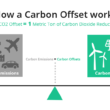Population growth and resource management are intricately connected. As populations grow, the need for resources such as food, water, and space increases. However, there is a limit to how much a given environment can provide. This limit is known as the carrying capacity.
Defining Carrying Capacity
In ecological terms, carrying capacity refers to the maximum number of individuals that a specific environment can support indefinitely. This concept is crucial for understanding the relationship between a population and its resources. When a population exceeds its carrying capacity, it can lead to resource depletion and environmental degradation.
Factors Influencing Carrying Capacity
Several factors influence the carrying capacity of an environment. These include the availability of food and water, the presence of predators and diseases, and the quality of the habitat. Additionally, human activities such as agriculture, urbanization, and pollution can also impact carrying capacity.
The Role of Technology
Technological advancements have played a significant role in increasing the carrying capacity of certain environments. For instance, modern agricultural practices have enabled us to produce more food on less land. However, it’s important to recognize that technology can also have negative consequences, such as pollution and habitat destruction.
Sustainable Resource Management
To ensure that populations do not exceed their carrying capacity, it’s essential to practice sustainable resource management. This involves using resources efficiently, minimizing waste, and protecting the environment. By doing so, we can maintain a balance between population growth and resource availability.
The Human Population Challenge
The human population has grown exponentially over the past century, leading to increased pressure on the planet’s resources. As we approach the carrying capacity of the Earth, it’s crucial to implement measures that promote sustainable development and reduce our ecological footprint.
Conclusion: Striking a Balance
In conclusion, understanding and managing carrying capacity is vital for maintaining a healthy balance between populations and their resources. By practicing sustainable resource management and embracing technological innovations responsibly, we can ensure a prosperous future for both the environment and humanity.
Similar Articles
- Carbon Credits: A Comprehensive Guide to Offset Emissions
- Carbon Insetting: A Comprehensive Guide
- Carbon-Neutral Journeys: Paving the Way Towards a Sustainable Future
FAQs About Carrying Capacity
1. What is carrying capacity?
Carrying capacity is the maximum number of individuals that a specific environment can support indefinitely without degrading the resources and ecosystems within that environment.
2. How is carrying capacity determined?
Carrying capacity is determined by various factors, including the availability of resources such as food, water, and space, as well as the presence of predators, diseases, and the overall health of the habitat.
3. Can carrying capacity change over time?
Yes, carrying capacity can change over time due to factors such as changes in resource availability, environmental conditions, and technological advancements.
4. What happens when a population exceeds its carrying capacity?
When a population exceeds its carrying capacity, it can lead to resource depletion, environmental degradation, and a decline in population size as individuals struggle to find the resources they need to survive.
5. How does human activity impact carrying capacity?
Human activities such as agriculture, urbanization, and pollution can have a significant impact on carrying capacity by altering the availability and quality of resources and habitats.
6. What is the role of technology in carrying capacity?
Technology can play a significant role in influencing carrying capacity. For instance, advancements in agriculture can increase food production, while improvements in transportation can facilitate the distribution of resources.
7. What is sustainable resource management?
Sustainable resource management involves using resources efficiently, minimizing waste, and protecting the environment to ensure that populations do not exceed their carrying capacity.
8. How can we increase carrying capacity sustainably?
Increasing carrying capacity sustainably involves adopting practices such as regenerative agriculture, renewable energy, and waste reduction, which help to maintain a balance between resource use and environmental health.
9. What challenges do we face in managing carrying capacity for the human population?
One of the significant challenges is the exponential growth of the human population, which puts increasing pressure on the planet’s resources. Additionally, addressing issues such as climate change, habitat loss, and resource inequality adds complexity to managing carrying capacity.
10. How can individuals contribute to maintaining carrying capacity?
Individuals can contribute by adopting sustainable practices such as reducing energy consumption, conserving water, minimizing waste, supporting local and sustainable agriculture, and advocating for policies that promote environmental protection and resource management.










